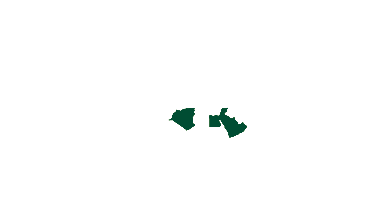Case study
2022 • Zuckerberg Institute for Water Research, Ben-Gurion University of the Negev Wastewater treatment for reuse in small off-grid settlements in the Negev desert
In the Negev desert, a novel wastewater treatment system (WWTS) has been developed and tested for small, off-grid settlements. This modular system integrates advanced technologies such as a recirculating vertical flow bioreactor (RVFB), ozonation, and ultrafiltration. Operating successfully for over two years, the WWTS produces high-quality effluent approved for unlimited irrigation by the Israeli Ministry of Health. It represents a sustainable solution for water reuse in arid environments, addressing water scarcity while meeting regulatory standards.
Recovered Materials & Products
Water
Waste Streams
Wastewater
Confirmed countries
Australia


Background and Context
Location: A farm in the Negev desert, Israel.
Resource Stream: Wastewater from off-grid settlements.
Challenges: Water scarcity in arid environments; Inefficiency of existing decentralized wastewater treatment systems (WWTS) in producing clean effluent; Need to meet governmental regulations for irrigation water quality.
Stakeholders included researchers from the Zuckerberg Institute for Water Research, local farmers, and the regional municipality of Ramat Negev.
Technologies/Methods Used:
- Settling tank for initial treatment.
- Recirculating Vertical Flow Bioreactor (RVFB) for biological treatment.
- Ozonation for pathogen removal and advanced oxidation.
- Ultrafiltration membrane polishing for final effluent purification.
Implementation Steps:
Construction of a full-scale WWTS on the farm.
Two years of operational testing under varying water qualities and seasonal conditions.
Monitoring effluent quality to meet regulatory standards for irrigation.
Outcomes and Impacts
- 90% reduction in dissolved organic carbon (DOC).
- Total suspended solids (TSS) reduced to levels below 10 mg/L, surpassing regulatory standards.
- Removal of E. coli after ozonation and membrane filtration.
- Stakeholders included researchers from the Zuckerberg Institute for Water Research, local farmers, and the regional municipality of Ramat Negev.
In addition, official approval from the Israeli Ministry of Health for agricultural reuse was obtained.
Lessons Learned
Regular maintenance by professionals proved critical for system reliability. Integration of online, low-cost sensors (e.g., pressure, turbidity, and ozone sensors) can enhance operation and safety. Efficient removal of organic micropollutants highlights the system’s robustness but also the need for broader regulatory frameworks to address such contaminants. The hybrid model combining centralized and decentralized wastewater treatment systems opens avenues for broader use in arid and semi-arid regions worldwide.
Learn more
This case study is extracted from the publication linked below: "Wastewater - Turning Problem to Solution", UNEP (2023)
https://www.unep.org/resources/report/wastewater-turning-problem-solution#:~:text=This%20new%20report%2C%20%E2%80%9CWastewater%20-,blocks%2C%20described%20in%20the%20publication.
The text of the case study is available at the link below:
https://files.grida.no/sdm_downloads/1146-case-study-14/
Technologies
Ultrafiltration
Membrane bioreactor
Themes
Capacity building
Technologies
Policy and regulation